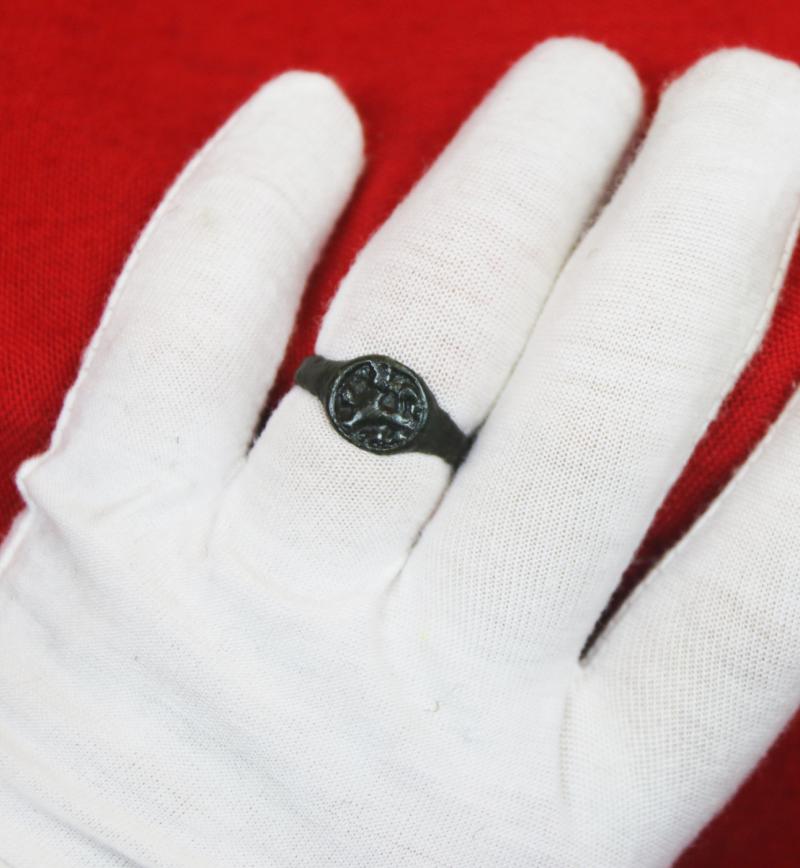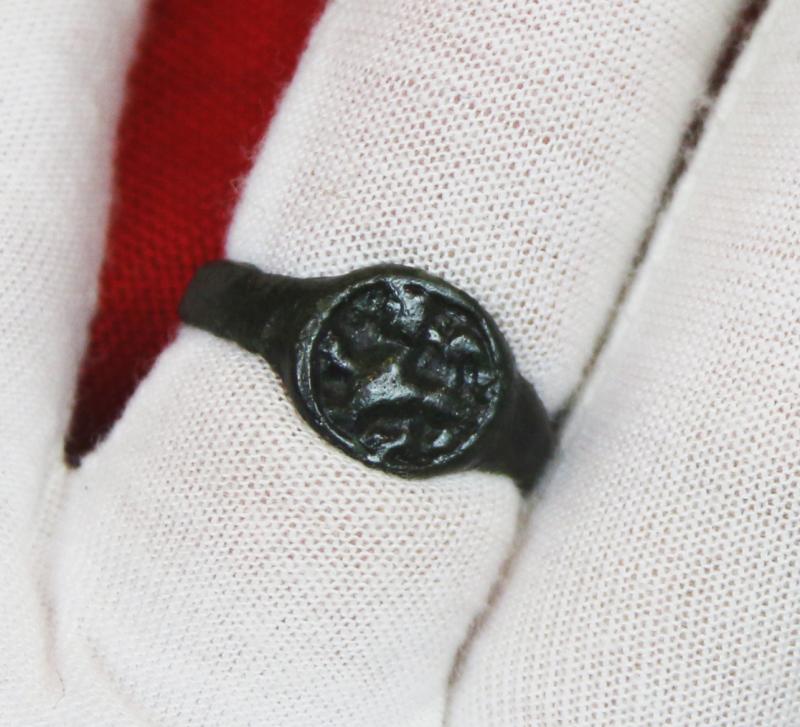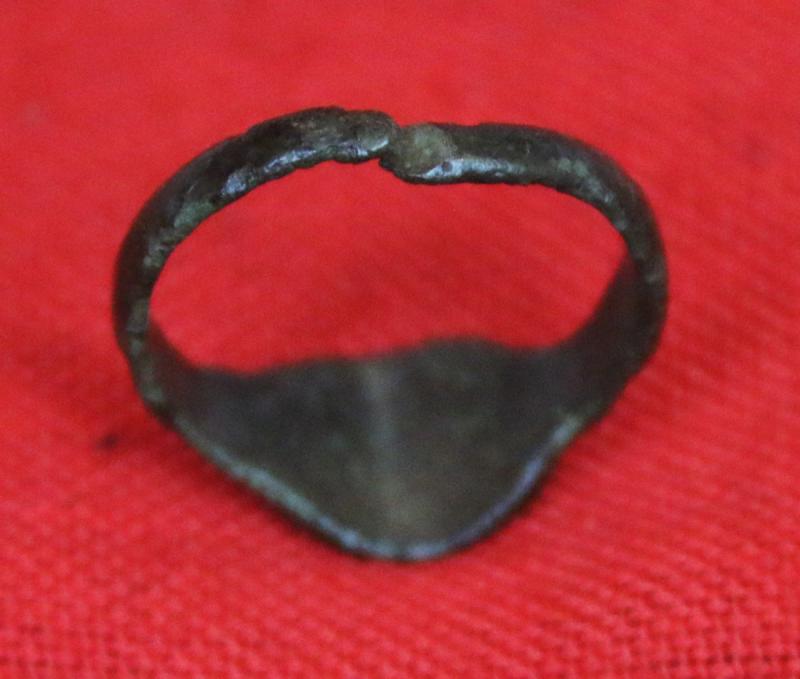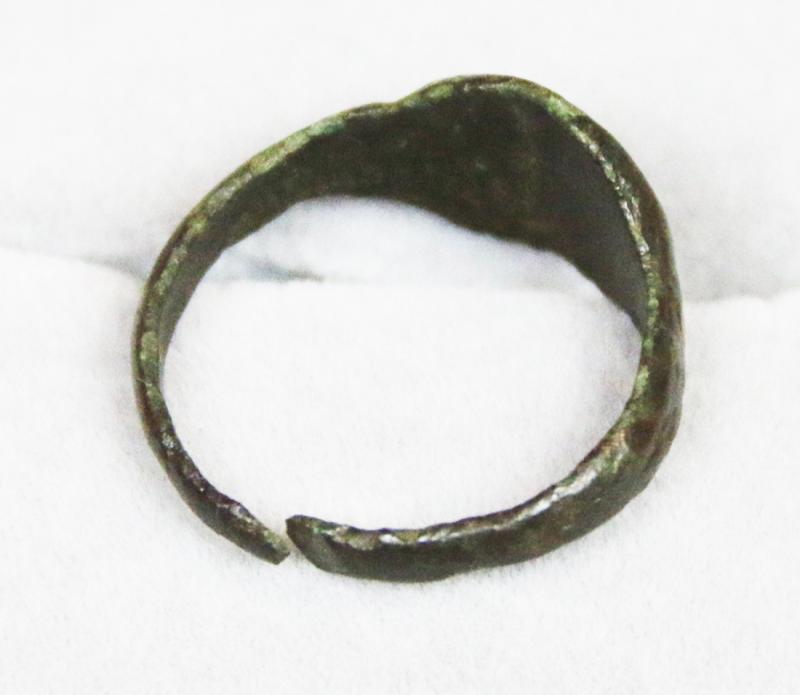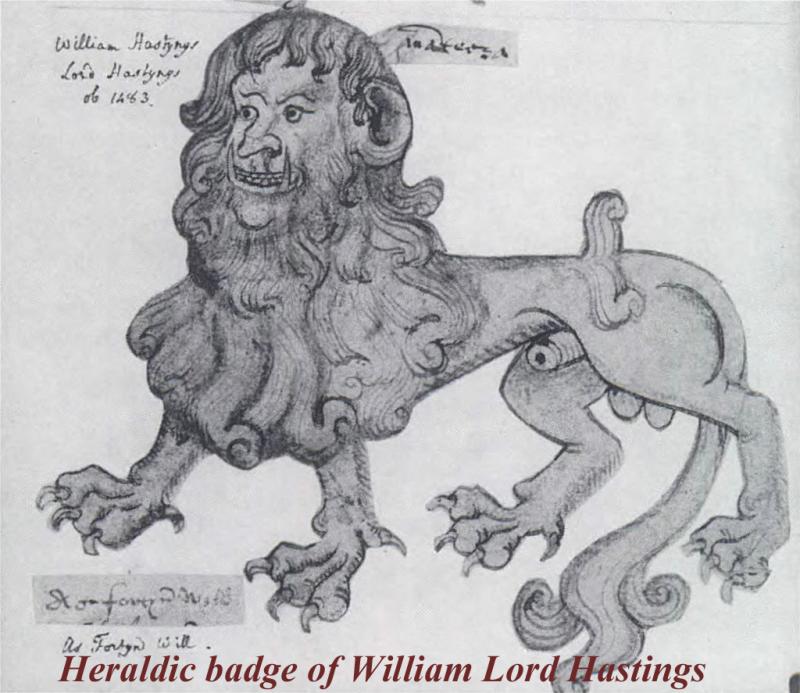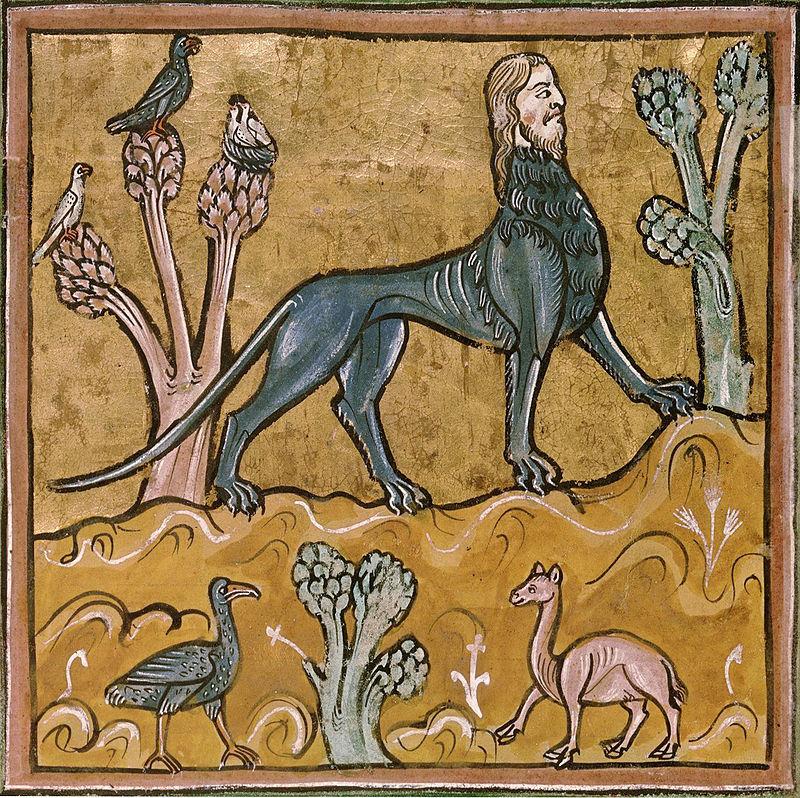Wonderful 12th-13th Century Crusader & Pilgrim Knight's Heraldic Seal Ring Of a Fantastical Beast The Manticore, A Human Headed Tiger or Lion. Used In Medeavil Heraldry On Shields, Banner, Accoutrements & Indicated To Which Noble Family A Knight Belonged
A superb naturally patinated bronze, realistically engraved with an intaglio of the Manticore a Man-Tiger or Man-Lion. For example, in the 1400's it was the Heraldic Badge of William Lord Hastings. Often used as a supporter for a noble coat of arms. The ring is also very unusual in that it is designed to be sectioned on the inside ring so as to be self adjusting for finger size.
The royal supporters of England are the heraldic supporter creatures appearing on each side of the royal arms of England. The royal supporters of the monarchs of England displayed a variety, or even a menagerie, of real and imaginary heraldic beasts, either side of their royal arms of sovereignty, including lion, leopard, panther and tiger, manticore, antelope and hart, greyhound, boar and bull, falcon, cock, eagle and swan, red and gold dragons, as well as the current unicorn.
In ancient Greek culture, the manticore represented the unknown lands of Asia, the area it was said to inhabit. In later times, the manticore was recognized by many Europeans as a symbol of the devil or of the ruthless rule of tyrants. This may have originated in the practice of using manticores as royal decorations, and heraldic devices.
The Manticore In Art, Literature, And Everyday Life
During the Middle Ages, the manticore appeared in a number of bestiaries, books containing pictures or descriptions of mythical beasts.
The manticore was also featured in medieval heraldry—designs on armour, shields, and banners that indicated the group or family to which a knight belonged.
The medieval Maniticore is featured in numerous medieval manuscripts known as Bestiary, a book written in the Middle Ages containing descriptions of real and imaginary animals, intended to teach morals, religion and to entertain.
The bestiary — the medieval book of beasts — was among the most popular illuminated texts in northern Europe during the Middle Ages (about 500–1500). Medieval Christians understood every element of the world as a manifestation of God, and bestiaries largely focused on each animal's religious meaning. Much of what is in the bestiary came from the ancient Greeks and their philosophers. The earliest bestiary in the form in which it was later popularized was an anonymous 2nd-century Greek volume called the Physiologus, which itself summarized ancient knowledge and wisdom about animals in the writings of classical authors such as Aristotle's Historia Animalium and various works by Herodotus, Pliny the Elder, Solinus, Aelian and other naturalists.
Following the Physiologus, Saint Isidore of Seville (Book XII of the Etymologiae) and Saint Ambrose expanded the religious message with reference to passages from the Bible and the Septuagint. They and other authors freely expanded or modified pre-existing models, constantly refining the moral content without interest or access to much more detail regarding the factual content. Nevertheless, the often fanciful accounts of these beasts were widely read and generally believed to be true. A few observations found in bestiaries, such as the migration of birds, were discounted by the natural philosophers of later centuries, only to be rediscovered in the modern scientific era.
Medieval bestiaries are remarkably similar in sequence of the animals of which they treat. Bestiaries were particularly popular in England and France around the 12th century and were mainly compilations of earlier texts. The Aberdeen Bestiary is one of the best known of over 50 manuscript bestiaries surviving today.These bestiaries held much content in terms of religious significance. In almost every animal there is some way to connect it to a lesson from the church or a familiar religious story. With animals holding significance since ancient times, it is fair to say that bestiaries and their contents gave fuel to the context behind the animals, whether real or myth, and their meanings.
UK size R1/2
Code: 25481
595.00 GBP



